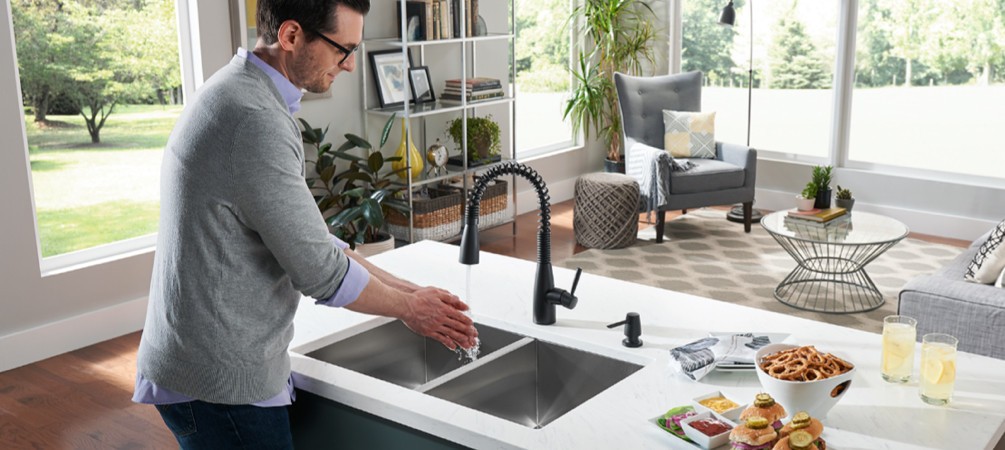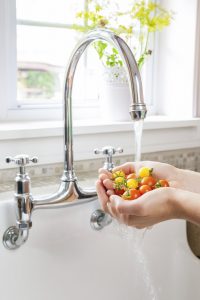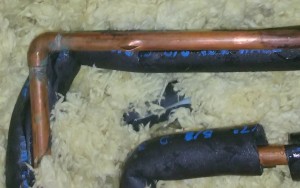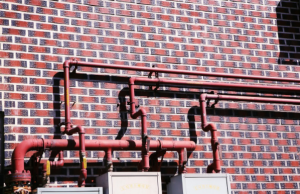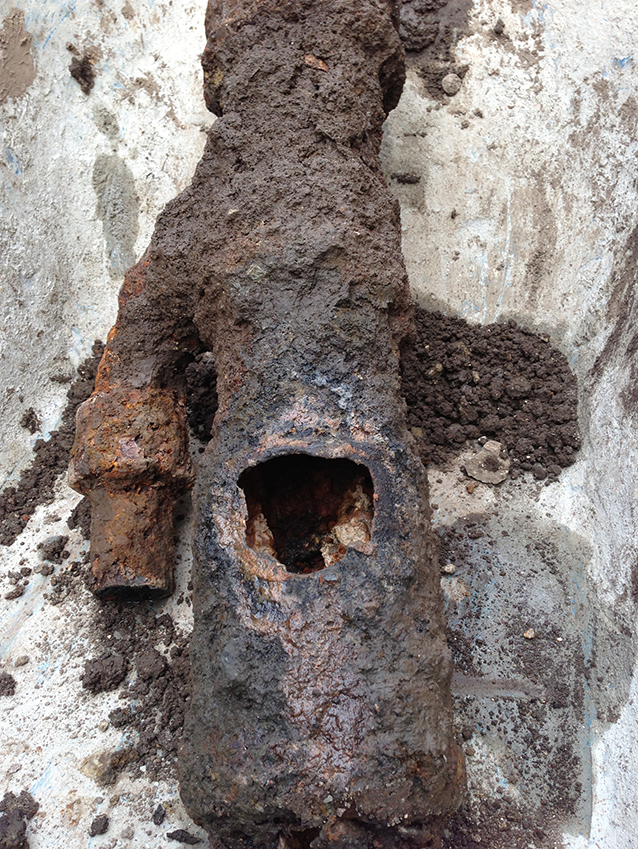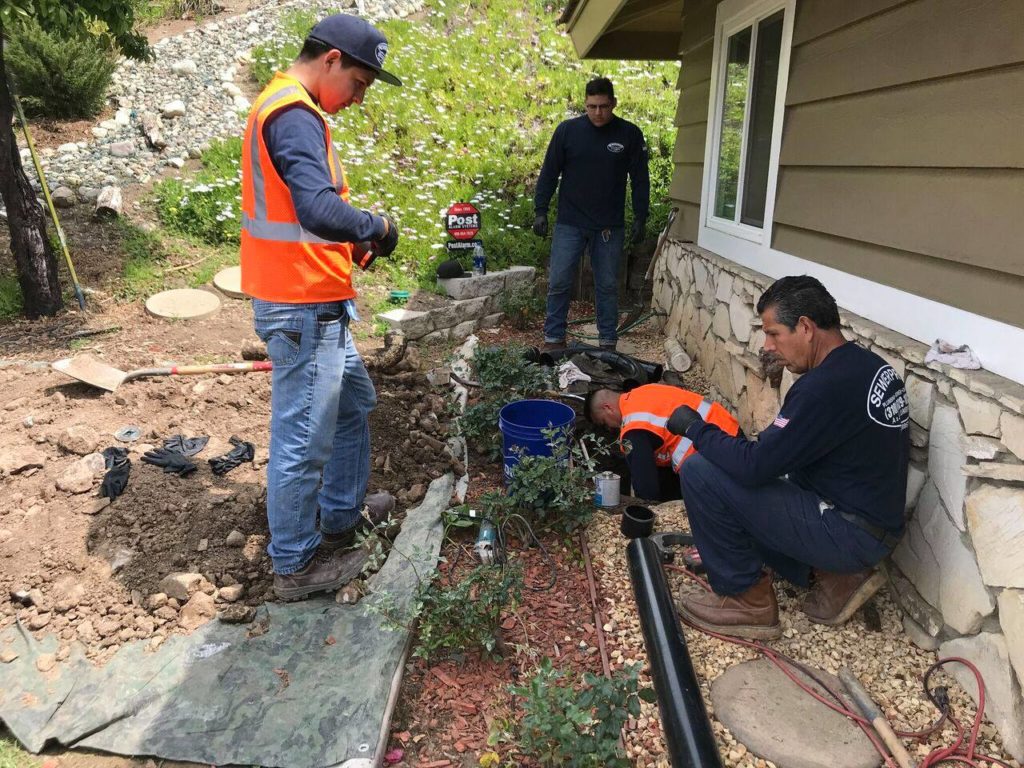Cast Iron Pipes: What You Can Expect in Older Houses
Shortly after I purchased my first home here in, I was pretty naive as to what owning an older home can mean and what to expect. I planned and budgeted oh so carefully for the items my inspector had red-flagged and all the small cosmetic renovations I planned on making. After only two weeks into the renovation process, I received a phone call from the electrician I had hired. “Did you know you have mushrooms growing under your house?” he said. Turns out, I had a leak in the main sewer line which had contaminated the dirt under the house in the crawl space. After running through my inspection papers with a fine-toothed comb, I verified that there was no mention of any plumbing red flags and that plumbing isn’t typically covered in a home inspection beyond running faucets and flushing toilets. In hindsight, I should have done my homework on what to expect from the old pipes found in these beautiful, vintage homes.
One of the most common problems is the aging cast iron pipe that was used in construction until about 1980, when PVC was introduced to residential building. According to a 2012 Water Infrastructure and Sustainability fact sheet by the Environmental Protection Agency (EPA), the average age of a broken water main in the U.S. is 47 years. Unfortunately for us, this means most of our homes’ pipes are on the tail end of their life expectancy. This especially affects the main sewer line and pipes coming from your bathrooms and kitchens. These pipes are subject to a much faster corrosive process than the pipes carrying just drinking water, which is what is used to fill bathtubs and sinks.
How old are your pipes?”
Let’s face it, our pipes are old. It’s likely your pipes are original and thus as old as the year your house was built. If you’re unsure, find out when your house was built and if there have been any plumbing replacements or repairs since you moved in.“ Knowing the age of your pipes will help you to assess their need for repair.”
Do you have mature trees near your water service lines?”
One of the many draws to the old neighborhoods of Vegas is the mature trees and established landscaping that provide shade from the hot sun. These roots systems, however, may have spread into the plumbing lines beneath our houses. If you do have mature trees and plants located close to your house, do some quick research on their root systems and determine if your pipes have been endangered.
Do you have clay soil?”
The most common types of soil in Las Vegas are clay, sand and hard rock caliche. “According to NACE International, the world’s leading professional organization for the corrosion control industry, sandy soils are among the least corrosive, and clay soils are among the most severely corrosive.” There’s nothing we can do about this one, folks. Look for warning signs mentioned below and plan ahead.
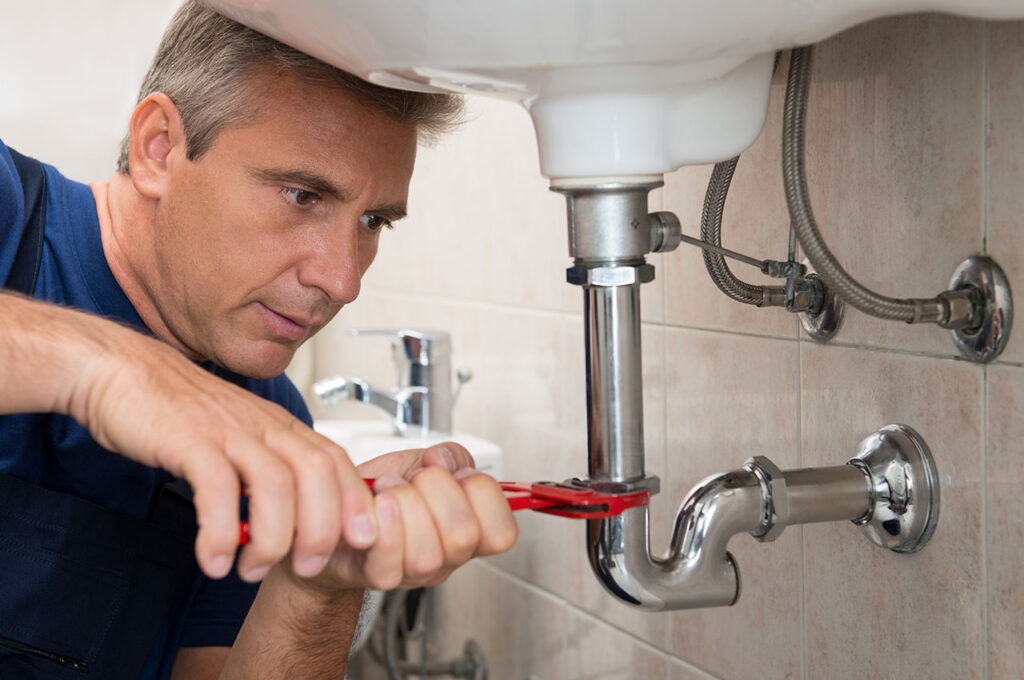
Preventative Maintenance Tips for Your Plumbing
What do you do when you have faucet leaks, broken pipes, clogged toilets, and water heater running cold? Wouldn’t you prefer to avoid these plumbing problems? Understanding the problems and performing preventative maintenance can help you avoid plumbing problems. The first step for preventative maintenance involves understanding everything that is included in your water system. These are everything that uses water in your home, such as the sinks in your bathroom, kitchen and laundry/utility room, your appliances such as the refrigerator, garbage disposal and washing machine, toilets, showers, and your water heater. All of these can be maintained to prevent plumbing problems from getting out of hand.
Here are some preventative maintenance tips you can use:
Fix leaking faucets and showerheads. Dripping faucets can waste a lot of water and that can add to your bill. And if you don’t fix a dripping faucet or showerhead, the drip can get worse over time. Those problems can cause water damage. To prevent problems, check your facets regularly for leaks and make repairs as needed. Check the handles to make sure no water drips when the handles are turned to the off position and check underneath the sinks for water stains or drips when the water is running.
Unclog slow drains. When the water is slow to drain there may be a problem. Before it gets out of hand, use a homemade mixture of vinegar and hot water to flush down the drain and unclog any debris. This preventative maintenance tip can be done every few months and will get the drain flowing again.
Check all exposed pipes and appliances for water leaks. Your disposal, refrigerator, or water heater can be the source of a leak. Look at any manufacturer’s requirements for maintaining your appliances. Watch for visible signs of a leak such as water stains on walls and ceilings, or puddles of water. Also be wary of mildew. Installing a drip tray underneath your water heater and washing machine can help limit damage if a leak were to occur.
Fix leaking toilets. Sometimes a faulty seal around the valve seat can cause your toilet to run even when it is not flushed. Over time, gunk will form around the valve seat and flapper. This gunk will prevent the flapper to seal properly, which will cause the water to continue to run. Another problem could be with the handle or tank stopper. The repair that is needed is often quick and inexpensive maintenance.
Be careful what you flush or pour down the drain! The problem with drains and toilets is that so many things can get flushed down them. The easiest way to prevent problems with your pipes is to be careful what you flush or pour down them to begin with. Don’t flush anything other than toilet paper and human waste down the toilet. Don’t pour anything that can be reactive down the drain.
Check the water pressure. Water pressure is how much force is coming out of your faucets and shower heads. You can test the water pressure on your system with a pressure gauge to make sure it is at a safe level. One other preventative measure is to add a pressure regulator to maintain your water pressure at a safe level.
Remove and clean your shower head of any sediment that may have accumulated. This can improve the water pressure of your shower head.
Drain your water heater to remove sediment annually to semi-annually. Over time your water heater can get sediment in it and become less effective.
Look inside the burner chamber of your water heater. You shouldn’t see any flakes of rust inside of the chamber. And verify the flame of the water heater is a blue color with no signs of yellow in the flame. If you see a yellow color, this may mean that the jets need to be cleaned.
Check the hoses for signs of cracks, brittleness, or leaking. Replace your hoses as needed.
If you have a septic tank, you should have it regularly inspected. Add pumping your septic tank to your list as an important part of maintenance.
If you have a sewer system, it is good to understand how your lines run and inspect for tree roots that could potentially damage your sewer lines. A preventative measure would be to have your sewer lines snaked periodically to avoid clogging.
Performing preventative maintenance for your plumbing can help you avoid a major plumbing problem. Sometimes you may need a repair after checking items to keep them maintained. Although some repairs can be do-it-yourself, others may require more expertise.
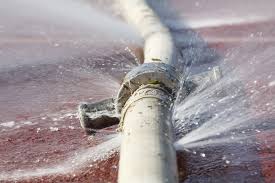
When Should I Consider Pipe Relining?
Perhaps the worst home maintenance project is repairing pipes. When you are having trouble with plumbing, your first instinct might be to replace the pipes. You are not wrong; replacing pipelines is a traditional way to remedy plumbing issues. This way, you will replace a faulty pipeline just like replacing faulty light bulbs. But, unlike replacing light bulbs, replacing damaged pipes is an expensive and burdensome process. It’s a good thing that there is a better way to repair damaged pipes, an easier and cheaper way to repair, and that is pipe relining.
Are broken pipes a persistent problem in your property?
Damaged pipes are a quite common home problem that need immediate attention. This is where pipe relining comes in. From small, persistent leaks, to instant pipe bursts, there are many instances when pipe relining will be useful. Below is a list of common pipe problems. If you experienced any of these, it might be time to consider pipe relining.
· Burst pipes
It is only natural for solid and oily materials to be a part of your waste. However, they can increase the pressure of your entire plumbing when left unmaintained. This increase in pressure expands the pipes until they burst. To help you monitor your pipes, call your trusted Newcastle plumber the moment you suspect a clogged drainage.
· Changes in temperature
Taking a cold shower in an extremely hot day may be satisfying, but not for your plumbing. Sudden extreme changes in temperatures such as running cold water along your warm pipelines can damage your plumbing. The rapid expansion and contraction of the pipes causes them to break easily.
· Root intrusions
Pipelines naturally attract roots. They are an abundant source of water and nutrients for the plants. So when there is a leak, roots seep into the pipe and can clog your plumbing. Repairing these damaged pipes can be costly. It also involves the process of unblocking and making sure that the roots will not intrude after the repair.
· Deterioration and rust
Steel pipes are likely to rust. Being exposed to moisture and other oxidating agents, this is practically inevitable. Rusting weakens the structural integrity of your pipes, which often leads to leakage. Likewise, the natural wear and tear of materials as they age over time helps degrade the quality of these materials. Not to mention that the harsh substances and elements that run through these pipes shortens their lifespan. A routine inspection, maintenance, and repair from your trusted plumbing service will save you from further trouble.
· Poor plumbing and maintenance
Seeking help from under-experienced or incompetent plumbers, or even fixing the plumbing on your own, can also lead to broken pipes. This may be because of a variety of reasons, such as an overlooked clog, or joints that are not screwed in well. Make sure that you hire competent and expert plumbers capable of maintaining your plumbing. In order to fix these common plumbing problems, we need to understand how they are damaged so that we can also try to prevent damage before they even happen. Moreover, leakage of waste water is harmful for your health. That is why we need a fast and immediate solution to these problems.
What is pipe relining?
Pipe relining is a relatively modern, non-invasive maintenance procedure to repair existing pipelines. After a thorough investigation of the site and the plumbing, the damage and obstructions along your pipeline will be identified. Then, these obstructions will be removed.
Broken Pipe Repair
A broken pipe always catches the homeowner or business owner off guard. There are many things that can cause a pipe to leak or burst, however one thing is always constant and that is the stress it will cause you when you notice water seeping from your ceiling, slab leak or puddling in your yard. At times you will not notice any excess water, rather a spike in your monthly water bill. This is always a good indication you have a leak somewhere that you need an Emergency Plumber to address.
Signs of a Broken Pipe:
Puddling Water
Damp Drywall
Low Water Pressure
Foul Odors
Banging Pipes
Spike in Monthly Water Bill
Gurgling Noise
Continuous Clogging
If any of these symptoms are occurring, your first step should be to turn off your main water valve
Common Plumbing Issues and How To Fix Them
Plumbing issues are often the most stressful. We can’t just ignore them, and in many cases, we can’t just fix them quickly and easily on their own. But if you have a basic understanding of common issues (like plumbing backups, clogged sewers, a clogged drain line, or leaking pipes) then you can more effectively communicate with your plumber about the problem and have a better understanding of the kinds of repairs needed.
Slow-Draining Sink
This common problem strikes when we least expect it: we fill the sink, clean whatever needs cleaning, and the next thing you know, we have a sink full of filthy water that doesn’t seem to want to go anywhere. The reason this problem is more regular than others is that we don’t really pay attention to what we put down that drain. There are a few common items that can end up in a drain, depending on the location of the fixture.
logged Toilet
Much like the clogged sink, only worse. A toilet can clog under the best of circumstances, and usually under the worst conditions. A clogged toilet is a much more difficult beast to tackle than a clogged sink because all the drainage is either in or underneath the toilet itself. These clogs are usually caused by a combination of human and paper waste (unless something has been physically dropped in there).
Running Toilet
You know that sound your toilet makes after you flush it? That’s the sound of water filling back into the tank after use. You should only hear that sound right after you flush, and only for a few seconds. If your toilet continues to fill, or fills at regular intervals, then you run the risk of a massive water bill at the end of the month
Dripping or Running Faucets
When talking about dripping or running faucets, let’s break it up into different potential problems.
